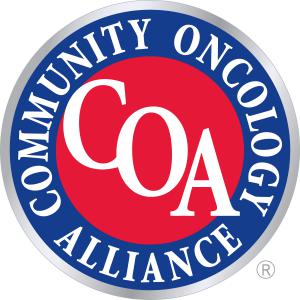New Data Shows Largest “Non-Profit” 340B Hospitals Charge Privately Insured Patients Extreme Markups for Cancer Drugs
COA Examination of 340B Data Indicates Hospitals Charge Markups of 4.9 Times to Insured Patients, Do Not Pass on Discounts to Patients in Need
Examining 340B hospitals’ own, self-published drug pricing data, the Community Oncology Alliance (COA) found that most non-profit 340B hospitals charge a median 4.9 times their cost to acquire the drugs, with no evidence that the profits are passed on to patients in need. Examining markups across sites of service, the data shows that hospitals generate significant margins from such markups.
- Click here to access, “Examining 340B Hospital Price Transparency, Drug Profits, and Incentives” on the COA site.
340B is a controversial federal program that requires drug manufacturers to provide outpatient drugs at significantly reduced prices to eligible health care organizations that are supposed to treat high numbers of uninsured and low-income patients. 340B disproportionate share hospitals claim the savings are used to reduce the price of drugs for patients and expand health services, but the reports make clear the discounts are being kept by the hospitals as profits, rather than being passed on to patients in need.
This is the second COA report on 340B hospital markups and reveals even worse transparency and markup data among the hospitals profiting the most off of 340B. This study is made possible by federal hospital price transparency rules requiring hospitals to publish their standard charges. Unfortunately, few hospitals are fully, or even partially, compliant with the transparency law that went into effect on January 1, 2021.
COA researchers had to analyze 117 of the largest 340B hospitals to arrive at the largest 50 340B hospitals reporting data in a complete and usable manner. (One hospital was ultimately excluded from the study due to questionable data.) COA then isolated 27 Medicare Part B oncology treatment and supportive drugs that had the highest spending in 2019. The charges were compared across patient, payer types, and sites of service. Markups and margins were calculated by examining the Average Sales Price (ASP) of drugs and assuming 340B hospitals receive a 34.7 percent discount, which is the average discount 340B hospitals reported by the Centers for Medicare & Medicaid Services (CMS) in 2020. It should be noted, however, that this is considered to be an extremely conservative discount as other reports have shown upwards of 66 percent discounts.
The 340B hospitals’ own data reveals that the median drug markup was 4.9 times their acquisition cost, and the markup differs materially by drug and payer. The lowest average markup was 3.2 times (Kymriah) and the highest was 11.3 times (Faslodex). The markups even differ within the same hospital, with different insurers being charged different rates for the same drug.
One example in the report examines the common cancer drug trastuzumab (Herceptin), a monoclonal antibody used to treat breast and stomach cancers. COA found that a 340B hospital would charge a commercial payer slightly more than five times the acquisition cost for a year of Herceptin treatment, netting the hospital a margin of $173,954.
“Employers who pay for private health insurance plans that cover the majority of Americans should be outraged that they are being fleeced by 340B hospitals who are making enormous markups from cancer drugs. Policymakers who talk about ‘lowering drug costs’ without addressing 340B have totally missed the mark,” said Ted Okon, executive director of COA. “340B is a runaway piggy bank for large hospitals and health systems who overcharge vulnerable patients and charge exorbitant markups, all while failing to be transparent about the billions of 340B profits they realize each year.”
The COA report also highlights the troubling trend that 340B hospitals continue to be slow to adopt biosimilars, favoring more expensive brand name drugs. This may be explained by the economic incentives for 340B hospitals to use higher priced drugs.
For example, the report showed 26 percent of the studied hospitals list prices only for Avastin and not its biosimilar. Only 10 hospitals within the dataset carried all the biosimilars studied. The use of lower cost biosimilars has long been seen as a solution to cutting health care spending in the U.S. The slow adoption of biosimilar products by 340B hospitals may be because of the potential economic incentives generated from higher percentage-based discounts and margins from brand name drug use.
Perhaps most disappointing is the finding that 340B hospitals continue to not pass on drug discounts to uninsured patients. Furthermore, only two of the 49 hospitals that shared data included cash paying rates, demonstrating an extremely disappointing lack of transparency from these supposedly “non-profit” 340B-designated hospitals who benefit from the program and are supposed to be providing affordable care to patients in need. Of those that did provide data, the report finds that 340B hospitals continue to charge cash-paying patients, of whom many may be uninsured, three times the acquisition cost of the drugs.
“My community oncology practice does not have access to 340B drug discounts for needy patients, yet we treat many of them in our rural and underserved community and manage to give out millions in free drugs, out-of-pocket assistance, and medical debt forgiveness,” said Kashyap Patel, MD, president of COA and a practicing medical oncologist at Carolina Blood and Cancer Care Associates in Rock Hill, South Carolina. “Perhaps it is time for the 340B program and discounts to directly benefit patients in need and not be tied to the institutions that profit from it.”
Read the full report at https://communityoncology.org/wp-content/uploads/2022/09/COA_340B_hospital_transparency_report_2_final.pdf
###
Drew Lovejoy
Community Oncology Alliance
email us here
Legal Disclaimer:
EIN Presswire provides this news content "as is" without warranty of any kind. We do not accept any responsibility or liability for the accuracy, content, images, videos, licenses, completeness, legality, or reliability of the information contained in this article. If you have any complaints or copyright issues related to this article, kindly contact the author above.

